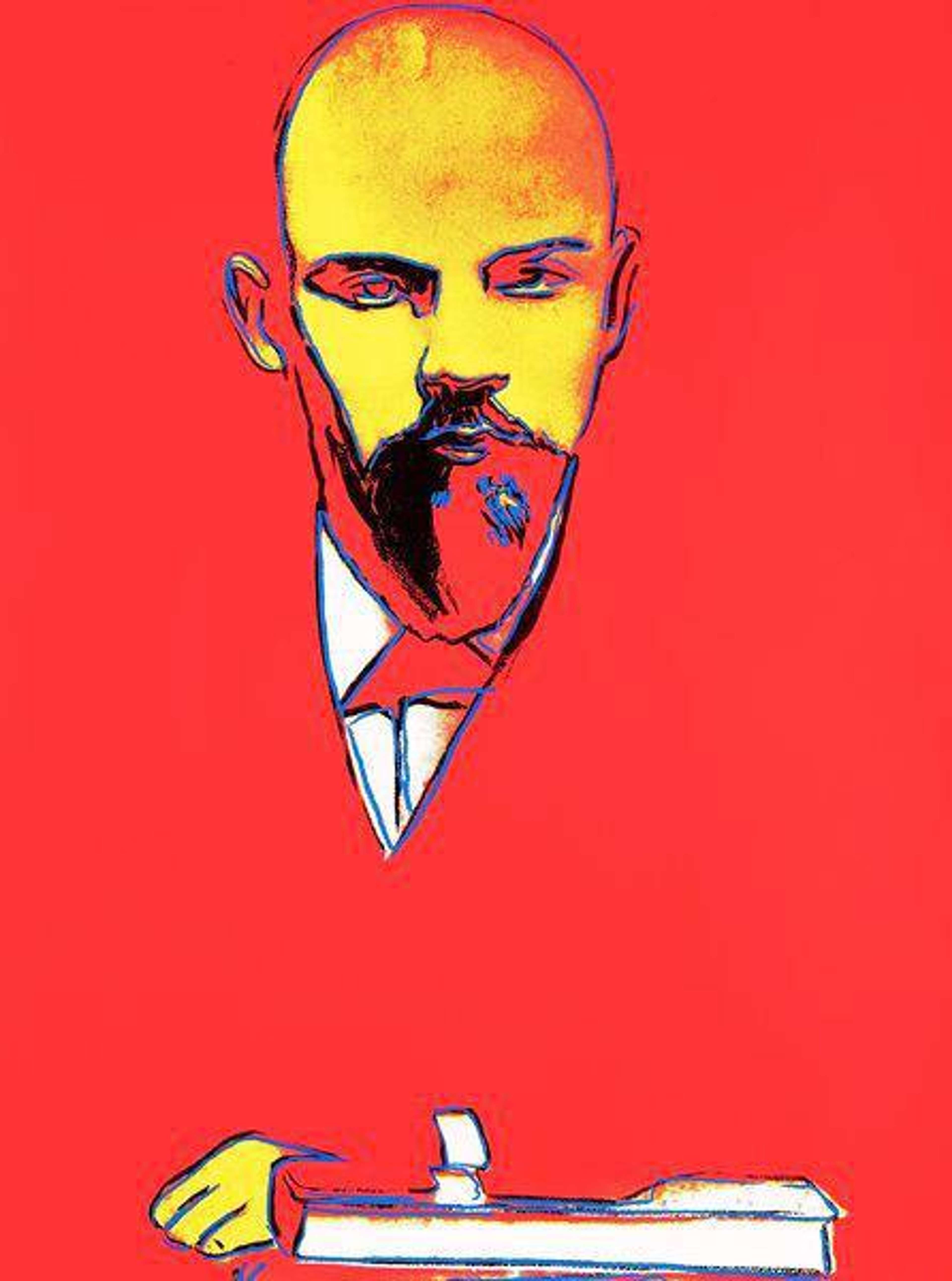
Red Lenin (F. & S. II.403)

Red Lenin (F. & S. II.403)
Signed Print
Andy Warhol
£30,000-£45,000
$60,000-$90,000 Value Indicator
$60,000-$80,000 Value Indicator
¥280,000-¥420,000 Value Indicator
€35,000-€50,000 Value Indicator
$310,000-$470,000 Value Indicator
¥6,230,000-¥9,340,000 Value Indicator
$40,000-$60,000 Value Indicator
There aren't enough data points on this work for a comprehensive result. Please speak to a specialist by making an enquiry.
100 x 75cm, Edition of 120, Screenprint
Auction Results

Track auction value trend
Meaning & Analysis
The more famous of the two images from the Lenin series (1987), Red Lenin (F. & S. II.403) is a signed screen print from an edition of 120. Depicting the leader of the Russian Revolution in vibrant red, this image is based on a photograph of Lenin. The frontal half-portrait depicts the iconic figure in thought. He rests his right hand on a book. There is no distinction between the red of Lenin’s suit and the background. Shaded with black and blue, Lenin’s red beard and the bright-white book become the focal points of the image.
The Lenin series was the last that Warhol completed before his death in February 1987. Although depicting a much more serious subject than Marilyn Monroe or Ingrid Bergman, Andy Warhol’s Lenin exhibits the same interest in “celebrity” and the mass-produced image as his earlier series. Warhol highlights Lenin’s iconic features, his pointed beard and bald head, in striking primary colours. As in his images of the Electric Chair or Chairman Mao, Warhol does not seem to be making a political statement. The revolutionary is almost removed from his political context here, becoming just another recognisable image continuously reproduced.